Environmental Policies
Currently, 39 DTE Energy locations are now certified to the ISO 14001 standard, a benchmark for facility management systems to enhance environmental performance, attain compliance obligations and reach environmental objectives.
At DTE Energy, we believe that our obligation to serve our customers and the community goes beyond the delivery of safe, reliable and economical energy products and services. We are committed to enhancing the quality of life for today’s society and future generations. Environmental stewardship and conservation of the Earth’s natural resources is at the heart of that commitment. For DTE Energy, environmental stewardship starts with operating our facilities, land, and equipment in a manner that complies with or exceeds governmental standards and is protective of our employees, customers and surrounding communities.
We commit to, and hold our employees and officers accountable to:
- Conduct our business in accordance with all applicable environmental, health and safety laws and regulations, and other relevant standards to which we may voluntarily subscribe, and provide the training, management systems, and resources necessary to do so.
- Make environmental concerns an integral part of our planning and decision making processes and commit resources to implement the environmental programs subscribed to by the company.
- Pursue cost effective energy conservation and efficiency improvements in our operations, and promote conservation practices and investments in energy-efficient technologies by our customers.
- Strive to reduce and, where practical, eliminate waste, using source reduction, recycling, reuse, and treatment techniques. Handle and dispose of all waste in a safe and responsible fashion, in accordance with regulatory requirements.
- Strive to eliminate unnecessary use of water in our facilities and to improve the quality of our water discharges. Employ practical land-management and conservation techniques to conserve the soil and forests at our facilities and properties. Actively pursue the use of renewable energy sources where practical.
- Continually strive to minimize, mitigate or restore adverse environmental impacts caused by our operations.
- Incorporate environmental criteria in our selection of contractors, suppliers, and material specifications. Strive to conduct business with entities that reflect our environmental values and commitments.
- Maintain open channels of communication with employees, government agencies, public officials, the media and the public to meet their information needs regarding energy and environmental issues.
- Participate with government agencies and others in framing responsible laws, regulations and standards affecting the community, our customers, employees, and the environment.
- Establish and use key measures to track our performance, set objectives and targets to drive continuous performance improvement, conduct audits and assessments, and promptly correct conditions that threaten human health, safety or the environment.
- Ensure that the appropriate subcommittee of the Board of Directors is fully informed of policies with regard to environmental responsibilities and is provided an annual report on the environmental performance, activities and significant issues facing the Company. Assign a Corporate Environmental Officer with primary environmental responsibility.
Belle River Power Plant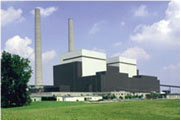
Fermi 2 Power Plant 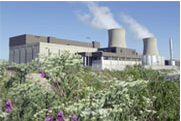
In 2000 Fermi 2 was recognized by the State of Michigan as a Clean Corporate Citizen. That same year, the Wildlife Habitat Council also certified the facility as a wildlife site. The Fermi 2 grounds are the largest parcel in the Detroit River International Wildlife Refuge, a cooperative agreement with the U.S. Fish and Wildlife Service that will protect and manage the wildlife and fish populations on plant grounds.
Belle River Power Plant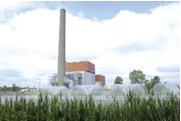
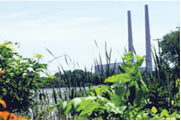 Monroe Power Plant
Monroe Power Plant
The Monroe Power Plant has been ISO 14001 certified since 2003. A certified Corporate Wildlife Habitat by the Wildlife Habitat Council, the Monroe grounds is home to a variety of plant and animal species, including peregrine falcons, bald eagles, and American lotuses. Every year, the facility hosts the National Audubon Society’s annual Christmas Bird Count, first launched in 1979. The plant was certified as a Clean Corporate Citizen in 2008. Additionally, the Monroe Power Plant received certification as a Corporate Lands for Learning in 2013.
River Rouge Power Plant
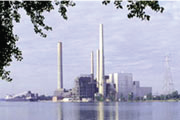 St. Clair Power Plant
St. Clair Power Plant
St. Clair Power Plant was ISO 14001 certified in 2002. Designated a corporate wildlife habitat by the Wildlife Habitat Council in 2000, the St. Clair grounds are home to many species of plants and animals. The facility has also donated funds to support Lake Sturgeon research.
Trenton Channel Power Plant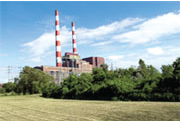
Service Centers
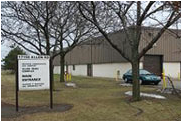 The main function of a service station is to monitor and maintain the natural gas distribution system. They are responsible for the delivery of natural gas to residential, commercial, and industrial customers. Other activities may include: meter reading, planning and construction, appliance repair, city gate station maintenance, meter repair, laboratory services, and administrative functions. Support organizations may include fleet maintenance and warehouse activities. Pictured: Allen Road Service Center.
The main function of a service station is to monitor and maintain the natural gas distribution system. They are responsible for the delivery of natural gas to residential, commercial, and industrial customers. Other activities may include: meter reading, planning and construction, appliance repair, city gate station maintenance, meter repair, laboratory services, and administrative functions. Support organizations may include fleet maintenance and warehouse activities. Pictured: Allen Road Service Center.
- Allen Road, Allen Park (2007)
- Alpena (2008)
- Big Rapids (2008)
- Cadillac (2008)
- Citizens Gas (2009)
- Coolidge (2009)
- Escanaba (2008)
- Grand Rapids - Wealthy (2009)
- Grayling (2008)
- Kingsford (2008)
- Ludington (2008)
- Lynch Road (2009)
- Michigan Avenue (2009)
- Mt. Pleasant (2008)
- Muskegon (2008)
- Operations Resource Center and River Rouge (2009)
- Petoskey (2008)
- Sault Ste. Marie (2008)
- Tawas (2008)
- Traverse City (2008)
Compressor Station
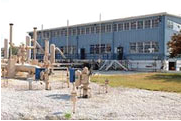 The main function of the compressor station is to compress, store, regulate, meter and withdraw high-pressure natural gas. These stations may store and transport natural gas for several different natural gas suppliers throughout Michigan and Canada. They also supply natural gas to the distribution system that our customers come to rely on. Pictured above: Belle River Mills.
The main function of the compressor station is to compress, store, regulate, meter and withdraw high-pressure natural gas. These stations may store and transport natural gas for several different natural gas suppliers throughout Michigan and Canada. They also supply natural gas to the distribution system that our customers come to rely on. Pictured above: Belle River Mills.
- Belle River Mills & Columbus, East China (2007)
- Gaylord (2008)
- Kalkaska (2008)
- Milford, Willow Run and Willow Gate (2008)
- Six Lakes (2008)
- Washington 10 & 28, Romeo (2008)
Distribution Operations is responsible for the delivery of electricity from substations to our industrial, commercial and residential customers. Distribution Operations maintains more than 700 substations (facilities that use a collection of transformers to reduce voltage and breakers to protect circuits) and 13 service centers and supercenters. The substation group (Systems Engineering and Equipment) was initially certified to the ISO 14001 standard in 2009.
 Environmental Management & Resources (EM&R)
Environmental Management & Resources (EM&R)
Environmental Management & Resources (EM&R), working with DTE Energy management, businesses, government, community and other opinion leaders, will provide practical environmental solutions that ensure compliance, minimize liability, improve effectiveness of existing and future assets, enhance the company’s image and influence and support corporate direction.
Peaker Group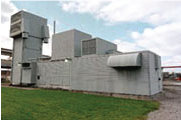
The Peaking Unit Organization maintains the combustion turbines and diesel engines used to provide power during peak demand as well as black start capability.
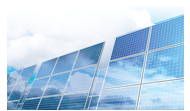 Renewable Energy
Renewable Energy
The Renewable Energy Department began the ISO 14001 certification process in the spring of 2013. Certification was completed in June 2015.
Renewable Energy manages multiple company owned and operated wind and solar photovoltaic generation facilities in southeastern Michigan.
DTE Energy Corporate Citizen Report
Our environmental policies are just one of the ways we are delivering on our promise to bring you clean, safe, reliable and cost-efficient energy. To learn more about our strategic vision to be a force for growth and prosperity, see our Corporate Citizenship Report.
